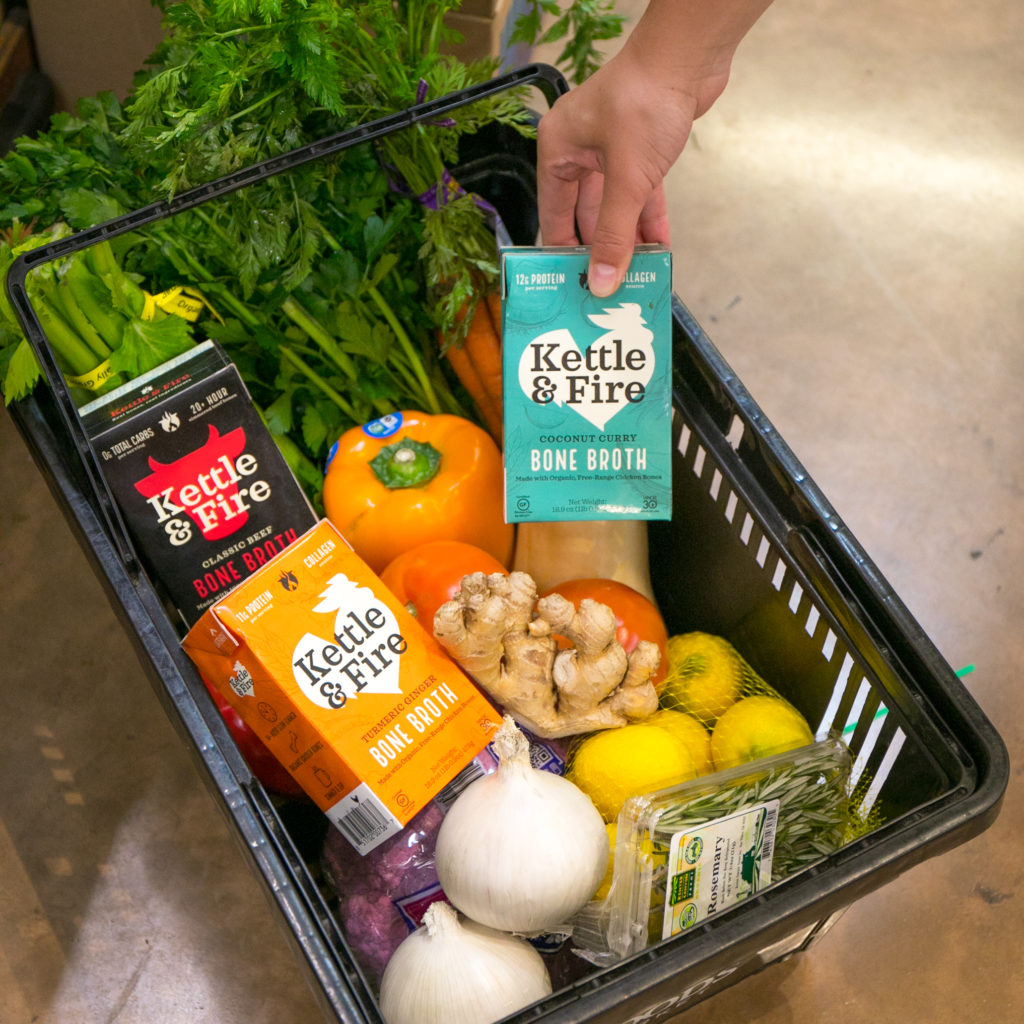Building Healthy Habits in the New Year

Perspectives from a Registered Dietitian
This post includes content contributions from Christina Badaracco, Healthcare Consultant & Registered Dietitian.
January 1: Set Resolutions.
February 1: Break Resolutions.
We’ve all done it.
Going into a new year is an exciting time. It’s a chance for newness, a chance for REAL change. So, we set goals with the intention of leaning into that change, only to realize that life very quickly comes knocking and we’re either forced to give up our lofty dreams or – more commonly – we’re too exhausted to keep them going, opting for what is more convenient or familiar.
Lack of time, willpower, support systems, and other barriers often prevent success. Furthermore, a lot of goals aren’t structured to set people up for success.
Extreme changes such as adopting an overly restrictive diet, engaging in excessive exercise, or taking on too much work can be concerning for both physical and mental health. As a registered dietitian nutritionist (RDN), I know that the pursuit of health – whether on January 1 or at any time of year – needs to be a gradual process and should coincide with feasible goals.
I’ve set up some easy ways you can make that happen.
Healthy Habit-Building

The “SMART” framework for goals suggests that they should be specific, measurable, achievable, relevant, and time-bound.
When a new diet or exercise plan is viewed as a one-time initiative, it typically doesn’t last and leads to frustration, a waste of time and money, and even regained weight or other poor outcomes. You can take other steps to maximize your likelihood of success and sustain it over time—which require creating and instilling new habits that become your lifestyle.
Preparing for change requires differences in both mindset and physical environment. Being patient with yourself, positive about your future and progress, and thoughtful about what else needs to change are all important ways of thinking.
Our environment consists of both people and material things—both of which important for sustaining positive changes. Surround yourself with a supportive community whose words and actions align with who you want to be and what you want to do in the future. They shouldn’t pull you backward into old habits or introduce you to new unhealthy habits. Also, you should surround yourself at home, at work, and throughout your life with (and only with) the food, personal care products, books and magazines, personal technology (and the applications on those pieces of technology!), and other things that align with your goals.

Also, look for ways to remind yourself about your goals. Write them on stick notes on your mirror or refrigerator, repeat them to yourself in the morning, or talk about them with friends and family. This will help you to thoughtfully clarify and remember them over time. Check in with yourself periodically—such as once per month when working on a year-long goal—to monitor progress and possibly even set a new goal if you’ve achieved the goal sooner than expected.
Top 3 Healthy Habits
People will all have different goals because they have different needs, barriers, and preferences. However, a few general nutrition-related habits could benefit most humans:
Seek Diversity in Foods

It’s so important for physical health and satisfaction to eat diverse foods – including both food groups as well as of individual foods themselves.
All foods contain different nutrients that our bodies need to thrive. Of course, the geographic region where we live, the season, distance to a grocery store or farmers market, or dietary restrictions may limit our options.
But whether you rely on frozen bagged produce or have access to the largest farmers market in California, seeking variety in the types of produce, grains, legumes, meats, dairy, and whatever other foods you eat will help to ensure your body gets what it needs—and also that the farms where those foods are produced have as much diversity to keep the soil, plants, and animals healthy.
___________________________________________________

Savor Flavors
Foods must be satisfying for us to want to eat them! Using spices, herbs, vinegars, and other condiments in your cooking are all great ways to add flavor.
And as an added bonus, spices and herbs can be full of polyphenols that act as antioxidants or even fuel our microbiome and therefore protect our bodies.
Keep a well-stocked pantry – but don’t buy huge containers that will lose flavor or go stale before you can use them. Buy spices in bulk, make your own condiments, and/or grow herbs at home (and consider drying them for long-term storage) to use whenever you’d like.
___________________________________________________
Plan Ahead

Planning meals, writing grocery lists, and building off of a few tried-and-true basic dishes can help you learn to cook what you love and to do so more efficiently.
Have options for general types of meals (e.g., a soup, pasta, or casserole) that you can cook in 15 minutes, 30 minutes, or longer weekend meals so you can start cooking from what you have on hand without needing a recipe.
Freeze leftovers or portions of soup in glass that can be microwaved for quick and healthy meals when you come home late or have to travel.
Keeping a few simple ingredients in your pantry—like Kettle & Fire bone broths and soups, dried lentils, and canned tomatoes—can ensure you have supplies on hand for a simple, nourishing meal any day. These tactics will also help minimize your need to buy takeout—which can get expensive, generates a lot of packaging waste, and is typically not so healthy.
___________________________________________________
A Final Note

I hope that implementing these habits will help you find joy and satisfaction in the foods you buy, cook, and eat. And in the long run, I believe these will help keep you and your loved ones on the path to health and wellness. If you’re looking for more support in this process, working with an RDN on any goal related to diet, fitness, and other lifestyle behaviors can be a helpful way to ensure they are appropriate, that you make progress toward achieving them, and you continuously set new goals to keep improving.
___________________________________________________

About Guest Contributor Christina Badaracco:
Christina Badaracco, MPH, RD, LDN focuses on healthcare transformation and elevating the role of nutrition in healthcare. She also regularly writes, teaches, and presents about nutrition, cooking, and sustainable agriculture—including publishing The Farm Bill: A Citizen’s Guide in 2019, publishing five cookbooks with the Transamerica Institute, and co-developing a culinary medicine elective at the Georgetown University School of Medicine. She currently serves on the board for Slow Food DC, the Academy of Nutrition and Dietetics’ Farm Bill Task Force, and other food- and nutrition-related organizations and was selected as the 2021 Recognized Young Dietitian of the Year by the Academy of Nutrition and Dietetics.
See more at: christinabadaracco.com
___________________________________________________









